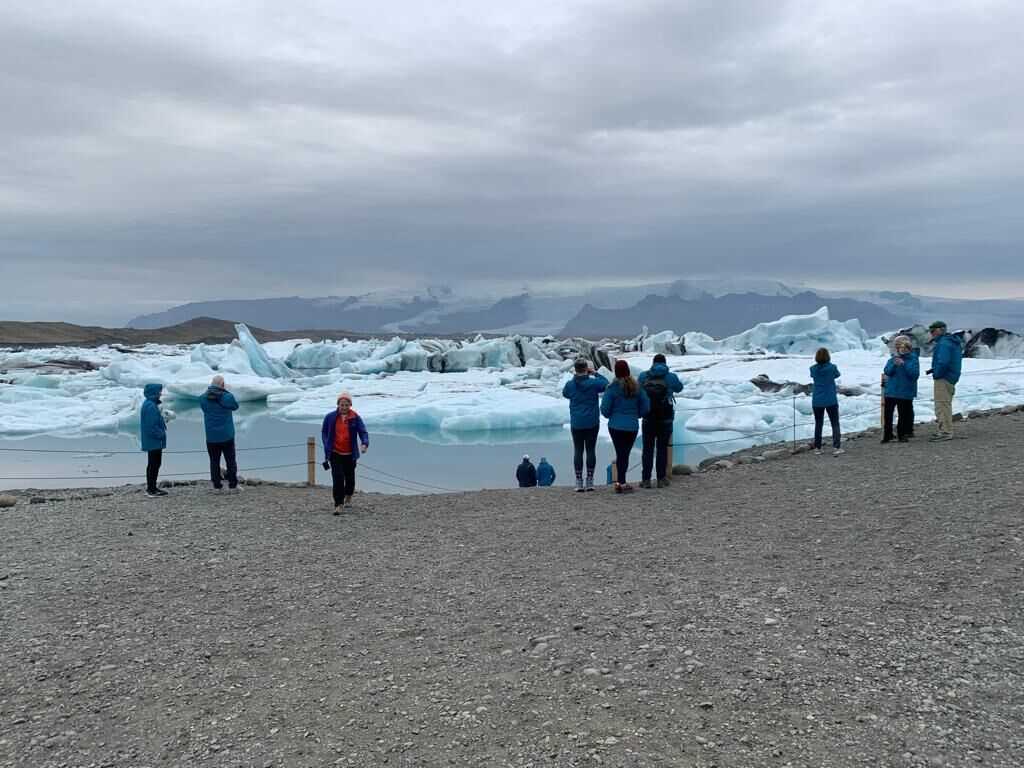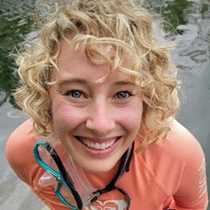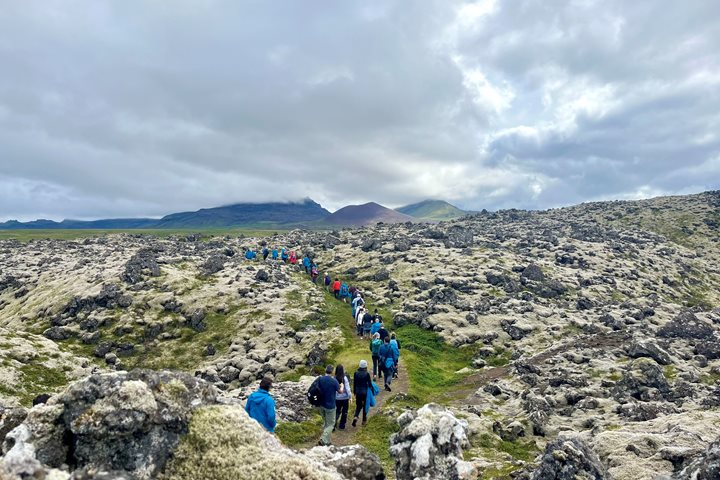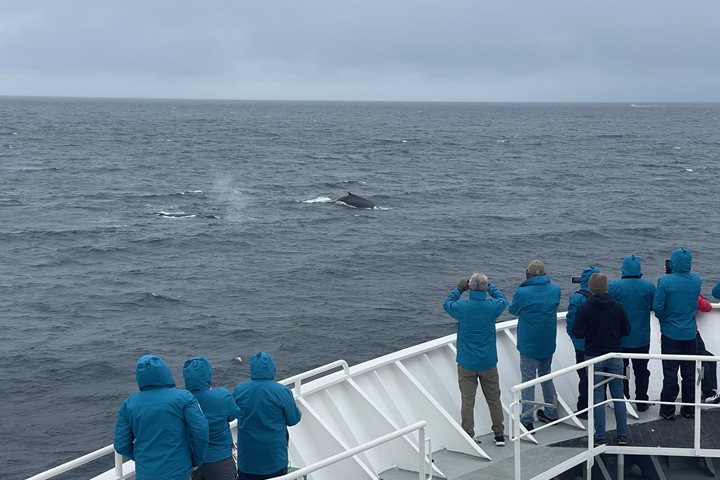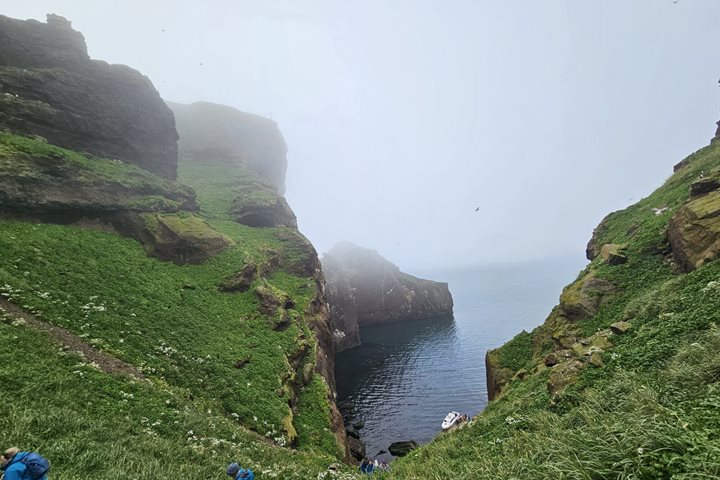As the fog slowly lifted this morning, we caught our first glimpse of the town of Djúpivogur, perched on a rocky point overlooking the surrounding fjords. National Geographic Resolution docked, and we began another day rich with choices to explore the southern side of Iceland. Some of us opted for an all-day tour to the beautiful Jökulsárlón glacier lagoon, while others enjoyed hikes along the black sand beaches. Our more intrepid adventurers piled into local Super Jeeps to explore some rugged terrain and witness more of the breathtaking landscapes of Southeast Iceland.
The ship was abuzz with conversation as we enjoyed dinner and recounted our adventures from the day. The grand finale came after dinner as we filled the Ice Lounge for a fun-filled night of entertainment put on by the crew of National Geographic Resolution. What a fantastic way to end the day!

